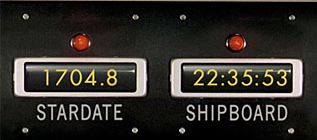Stardates in the Star Trek universe are a way of representing dates that are used to track the passage of time in the show's various series and movies. However, there is no standardized formula for how Stardates are calculated, and their use has evolved over time.
In the original Star Trek series, Stardates were a five-digit number followed by a decimal point and one or two more digits. The first two digits represented the season of the year in which the episode took place (with season one starting at 1,000 and season two at 2,000, for example), while the remaining digits represented the number of days elapsed since the beginning of that season.
Later on, in The Next Generation and subsequent Star Trek series, the formula for Stardates became more complex and less consistent. Stardates were based on a mathematical formula involving a combination of the current year, day of the year, and other factors. However, the precise formula used to calculate Stardates was never revealed, leading to some inconsistencies and confusion.
Despite their somewhat vague nature, Stardates continue to be a popular way for Star Trek fans to track the passage of time within the show's universe. They are often used as a shorthand reference to a particular episode or moment in the series' history.
Stardates are not a real measure of time. They are a fictional system used within the Star Trek universe to represent dates and the passage of time. Stardates do not correspond to any specific calendar or timekeeping system used in the real world, and there is no direct conversion between Stardates and real-world dates. The specific formula used to calculate Stardates in the Star Trek universe has evolved over time and is not consistent across all series and movies. While Stardates can be a useful way to track events and dates within the context of the Star Trek universe, they are purely fictional and have no bearing on real-world timekeeping.


No comments:
Post a Comment
Contact The Wizard!
(he/him)